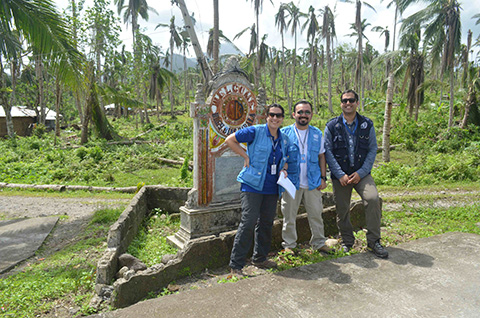
My name is Maria Jose Sagrado Benito and I am a Spanish epidemiologist based at the Institute of Health Carlos III, Madrid. I joined the international effort to help the communities affected by the Typhoon Yolanda last December.
I arrived in Tacloban on December 18 - six weeks after the Typhoon. I could immediately see for myself the level of destruction across the community. There was rubbish and debris everywhere and the relentless rains made the area an ideal breeding site for mosquitos. I was part of the team who were trying to make sure there was not a large scale outbreak of diseases carried by mosquitos such as dengue fever, which is endemic in the Philippines.
The WHO asked me to clear mosquito breeding sites in areas where suspected cases of dengue had been found. A cash for work program was implemented in the region by UNDP in coordination with WHO: together debris removal workers and teams spraying insecticide helped reduce mosquito breeding sites.
I worked as part of a team surveying the area and identifying potential places where mosquitos carrying dengue were present. Our team’s work helped the local health coordinators decide which high risk areas to prioritize (including schools, churches and hospitals) to make sure the mosquito breeding sites were destroyed. There was a real concern there would be a dengue epidemic but in fact we helped to reduce the number of cases of dengue compared to the same time in 2012/13 which was a huge achievement.
The whole team worked really hard despite the difficult conditions. Some team members had themselves lost homes, family and friends in the typhoon. I was really proud to be part of a team of national and international colleagues and to feel a real sense of achievement when we knew we had helped stop dengue fever spreading. Now I am continuing my work to make sure we keep up the good work and stop dengue.
